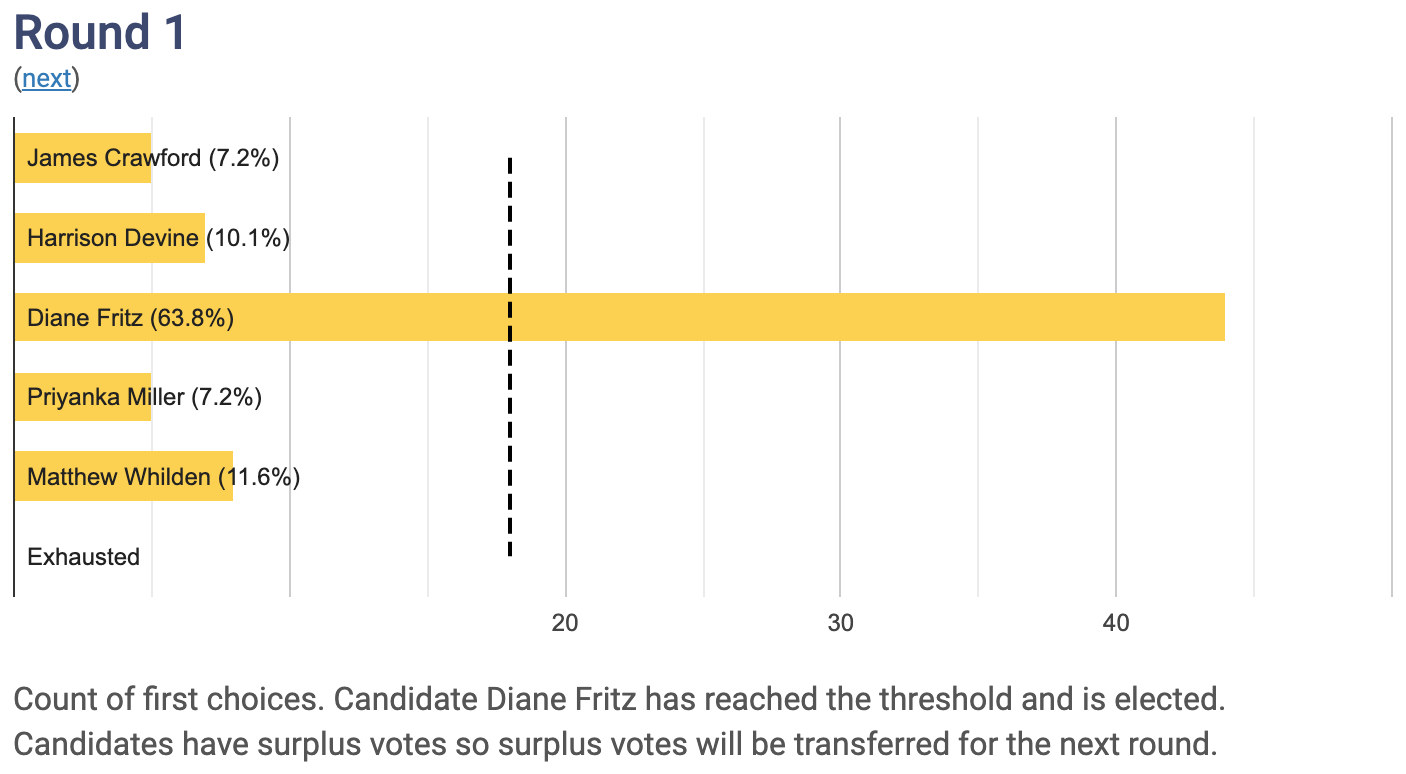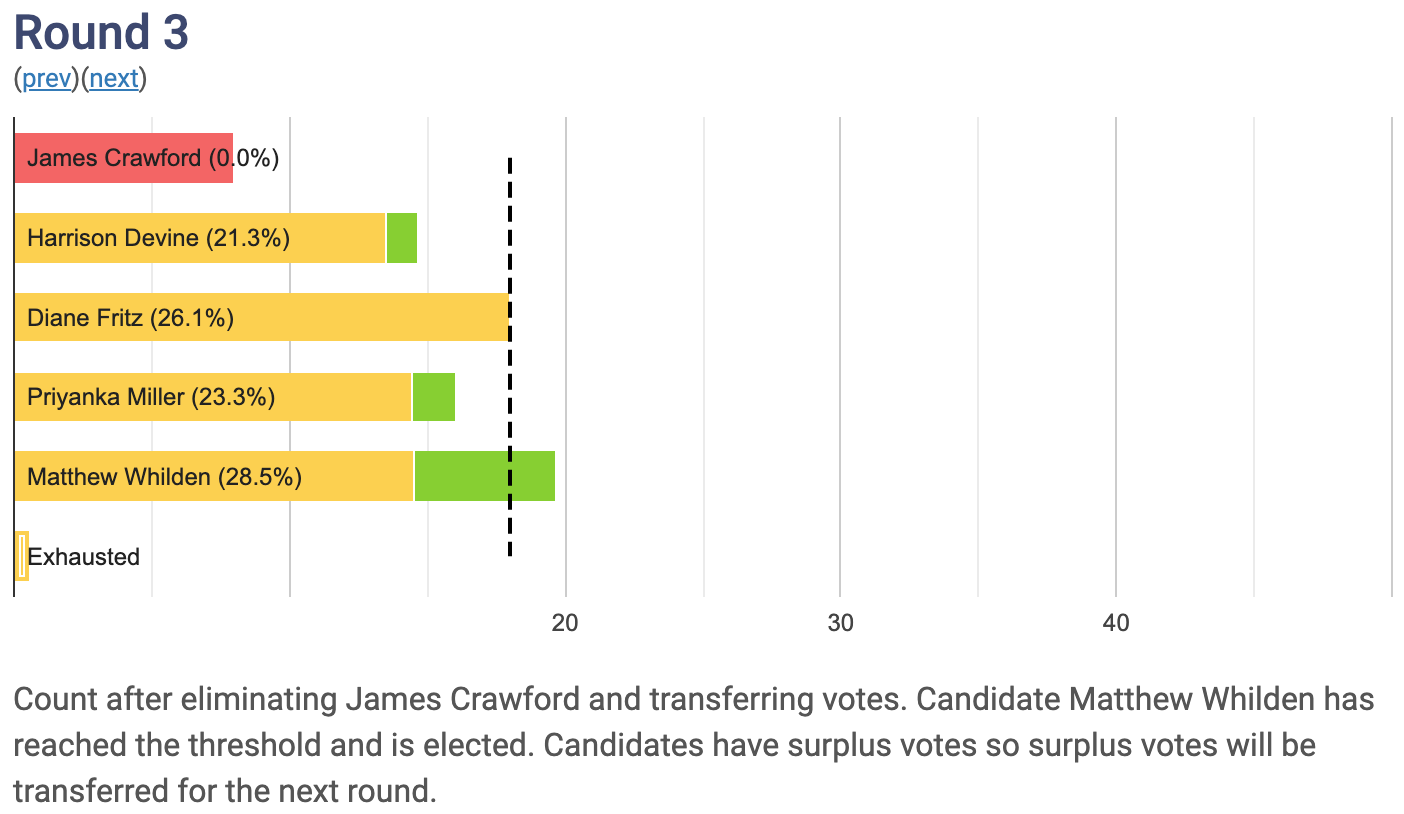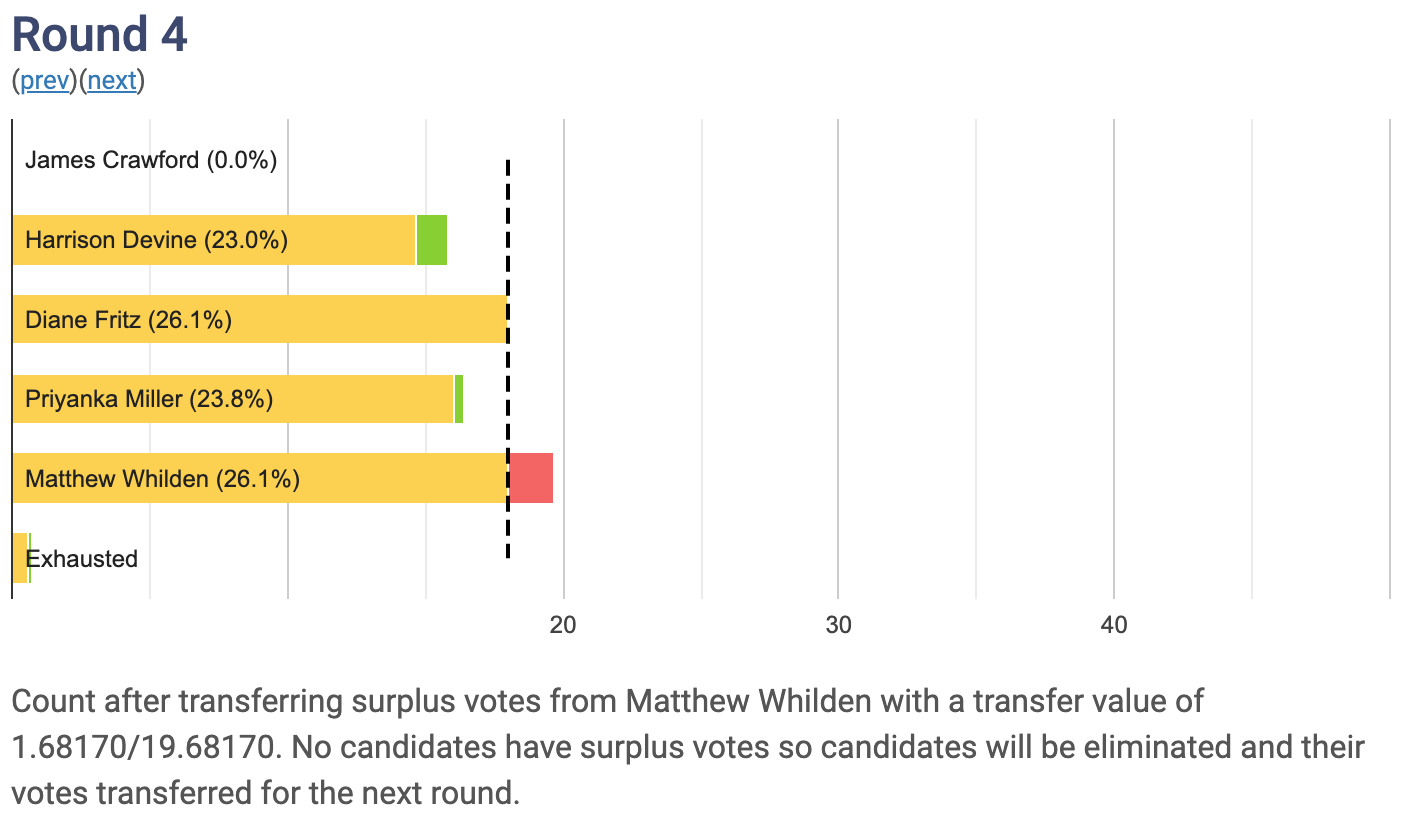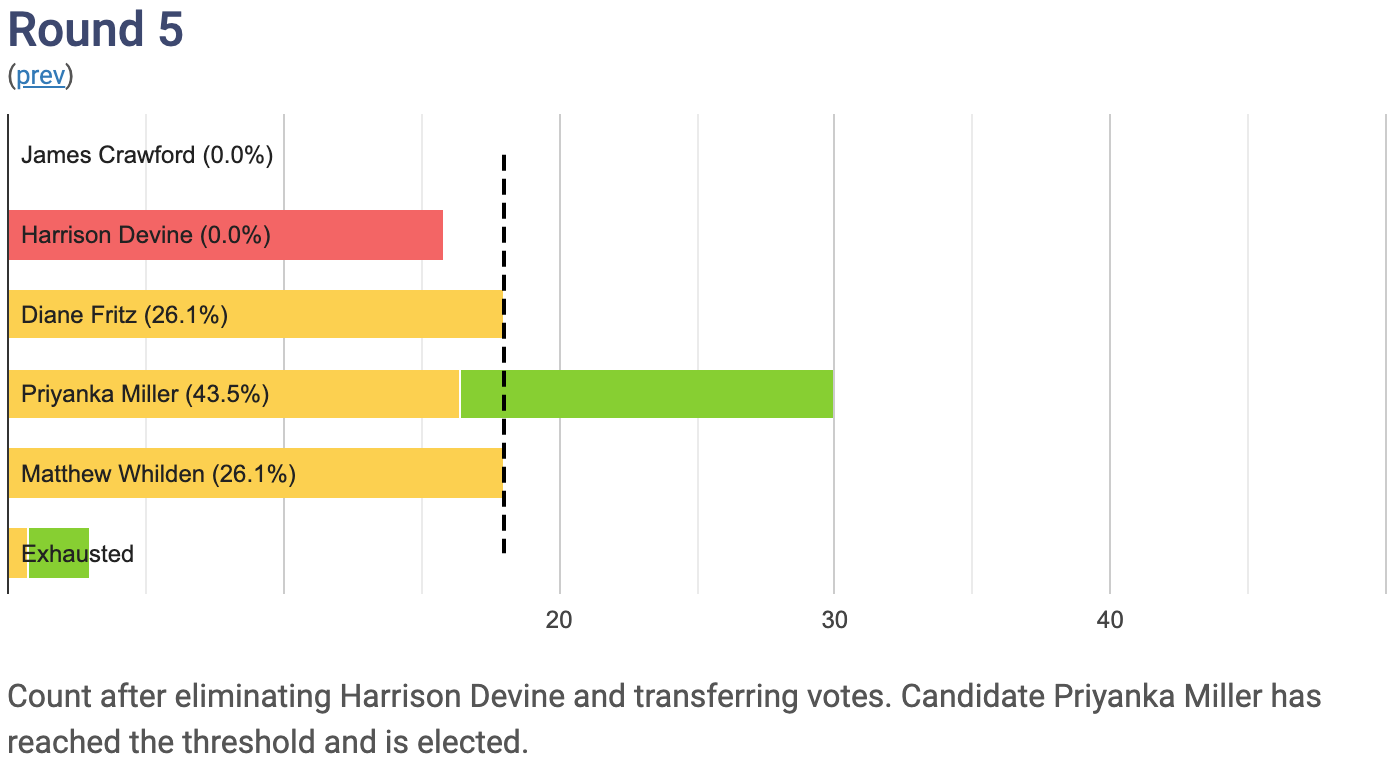The OpenStreetMap US board elections for 2023 have completed!
As a Governance Committee member, I volunteered as this year’s election observer. This involves ensuring that the voting was conducted properly and that the elections were impartial and not unduly influenced.
This year’s election filled 3 vacancies for board members whose terms expired. Five candidates ran for the open roles. 70 (45%) of the 157 voting members participated. The new OpenStreetMap US board members, joining continuing board members Brian Sperlongano & Adam Franco, are:
- Diane Fritz
- Matthew Whilden
- Priyanka Miller
Congratulations and thanks to them for their willingness to serve the community in this way! And thank you to James and Harrison for stepping forward this year as well!
Read on if you want to understand more about the voting process and outcomes.
Voting process and detailed results
OpenStreetMap US elections used ranked-choice voting (RCV). Alan McConchie does a fantastic job explaining this and describing how it worked in the 2019 Board election.
As an homage to Alan’s commentary, I thought I’d take a stab at discussing the process and results for 2023.
For 2023, this was different since multiple positions were open. For those circumstances, we use an RCV process also known as single-transferable vote (STV). Technically, we are using a flavour known as Scottish STV.
Here’s how that worked in the context of our election.
First, the vote tallying software establishes what’s called a “quota” or “winning threshold”. That’s the minimum number of votes that a candidate needs in order to become elected. The formula for this is: Threshold = (number of votes cast) / (number of positions open + 1) + 1. Any remaining fraction is discarded. This year’s threshold was 70 / ( 3 + 1) + 1 = 18.
In the first round of voting, votes are assigned to each voter’s first-preference candidate. Any candidate(s) who meet the winning threshold are elected. First-round results are below. Diane Fritz is the only candidate to meet the threshold. She receives 44 votes and is elected.

The next round of voting occurs. Here, the surplus votes for Diane are transferred to voters’ next-preferred candidates. This happens so that votes aren’t wasted on candidates who don’t need them. Diane received 26 surplus votes. We don’t just want to transfer the votes of the last 26 people; that would privilege some votes over others depending on when they were cast. So all of the votes are transferred, but at a fraction of their value. In this case, each vote for Diane is transferred to the next-preferred candidate at 26/44 of its value, or 0.59090 (Scottish STV mandates rounding to 5 decimal places). The fraction preserves the 18 votes needed to remain with Diane.
Some of the votes are “exhausted”, meaning that the voters did not include any lower-preference candidates on their ballot.

The third round of voting occurs. In this case, we eliminate the candidate with the fewest votes and transfer those to others. These are not surplus votes so they have a full value (they are not fractional). The transferred votes allow Matthew Whilden to reach the threshold with 19.68170 votes.

This continues until all positions are filled. In our case, that requires two more rounds:


After the fifth round, Priyanka Miller is elected with 30.00536 votes.
This year’s election was fairly straightforward, with no tie-breakers or other exciting twists required.
Thank you to everyone for voting! Didn’t vote this year? Become an OSM US member to vote in 2024.

